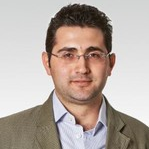Topic Menu
► Topic MenuTopic Editors


Advances in Metallic Glasses
Topic Information
Dear Colleagues,
For this Special Topic, we plan to publish articles on recent advances in the field of metallic glass, covering (i) glass formation kinetics, liquid fragility, and thermal forming; (ii) thermal annealing and nanocalorimetry; (iii) synchrotron X-ray radiation; (iv) hydrogen storage and conversion; (v) electro/photocatalytic/corrosion activity; (vi) the influence of microalloying and nanocrystallization on magnetic/electrical behavior; (vii) mechanical properties, from a nano- to global-scale; (viii) high-resolution electron microscopy studies; (ix) biostability, cell interactions, and antimicrobial properties; (x) finite element modeling and (ab initio) molecular dynamics simulations of synthesis, processing, and chemical activity; (xi) additive manufacturing; (xii) miscellaneous properties on different length-scales (acoustics, optics, thin-film coatings, powder processing, etc.) of metallic glasses; (xiii) metallic glass in situ and ex situ composites and their properties; and (xiv) recent applications of metallic glasses.
We invite researchers from different disciplines to submit original research papers, reviews, short communications, and summaries of developments.
Dr. Baran Sarac
Dr. Vladislav Yu. Zadorozhnyy
Dr. Elham Sharifikolouei
Dr. Yurii P. Ivanov
Dr. Güven Kurtuldu
Dr. Chandra Sekhar Meduri
Dr. Tolga Karazehir
Topic Editors
Keywords
- metallic glass
- glass forming
- crystallization
- rapid quenching
- deformation
- heat treatment
- biomaterials
- corrosion
- hydrogen storage/release
- electron microscopy
- simulations
- composites
- applications
- coatings
- additive manufacturing
Participating Journals
| Journal Name | Impact Factor | CiteScore | Launched Year | First Decision (median) | APC |
|---|---|---|---|---|---|

Applied Sciences
|
2.7 | 4.5 | 2011 | 16.9 Days | CHF 2400 |

Catalysts
|
3.9 | 6.3 | 2011 | 14.3 Days | CHF 2700 |

Materials
|
3.4 | 5.2 | 2008 | 13.9 Days | CHF 2600 |

Metals
|
2.9 | 4.4 | 2011 | 15 Days | CHF 2600 |

Nanomaterials
|
5.3 | 7.4 | 2010 | 13.6 Days | CHF 2900 |

MDPI Topics is cooperating with Preprints.org and has built a direct connection between MDPI journals and Preprints.org. Authors are encouraged to enjoy the benefits by posting a preprint at Preprints.org prior to publication:
- Immediately share your ideas ahead of publication and establish your research priority;
- Protect your idea from being stolen with this time-stamped preprint article;
- Enhance the exposure and impact of your research;
- Receive feedback from your peers in advance;
- Have it indexed in Web of Science (Preprint Citation Index), Google Scholar, Crossref, SHARE, PrePubMed, Scilit and Europe PMC.



